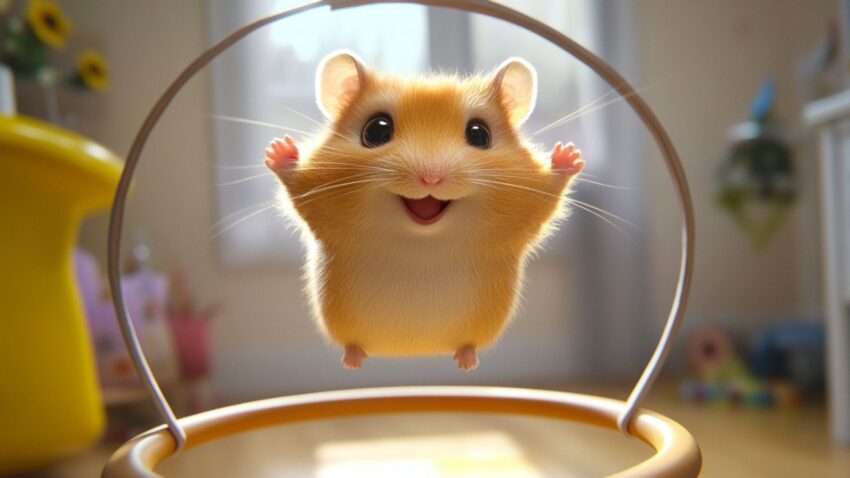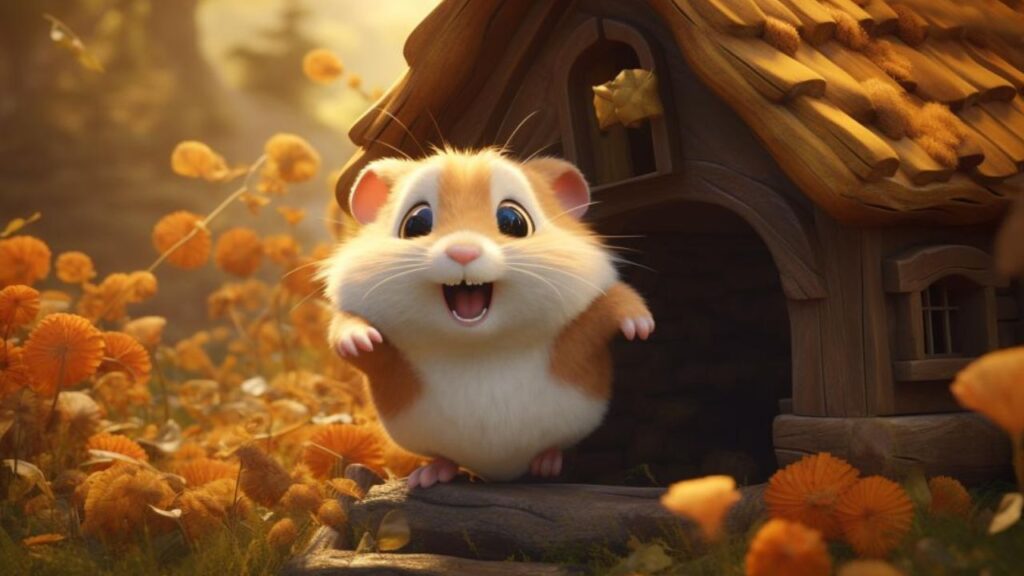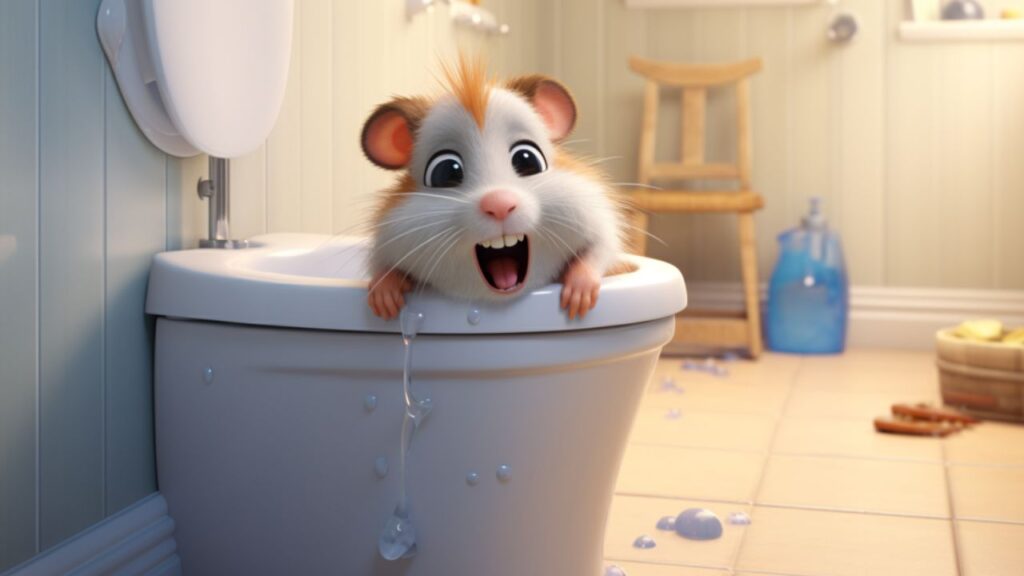raining your hamster to jump through hoops may sound ambitious, but it’s an incredibly rewarding experience for both you and your little furball. Despite their small size, hamsters are more capable than most people realize. With a bit of patience, some creativity, and a whole lot of positive reinforcement, you can teach your hamster to perform this impressive trick! Not only is it a fantastic way to show off your hamster’s skills, but it also provides much-needed mental and physical exercise.
When people think of training tricks, they often picture dogs leaping through hoops or cats playing fetch, but hamsters can also be taught to perform complex behaviors—proving that even tiny paws can achieve big tricks! Hoop-jumping taps into your hamster’s natural agility and curiosity, turning a fun challenge into a structured learning experience. Plus, it’s a surefire way to keep your hamster engaged and entertained, giving them something to focus on and work towards.
The trick itself involves coaxing your hamster to jump through a small, safe hoop, starting at ground level and gradually lifting the hoop as your hamster becomes more confident and capable. This process helps build trust between you and your hamster and introduces a new form of interactive play that can deepen your bond. It’s not just about getting your hamster to jump—it’s about teamwork, persistence, and celebrating those little victories along the way.
Why Hoop-Jumping Training is Beneficial
So, why should you consider teaching your hamster to jump through hoops? For one, it’s a great way to provide both mental and physical exercise. Hamsters are naturally active animals, but running on a wheel or digging in bedding doesn’t always provide enough variety to keep them mentally stimulated. Learning new tricks, such as jumping through hoops, challenges your hamster to think, problem-solve, and engage with their environment in new ways.
Additionally, training tricks like hoop-jumping can help prevent boredom-related behaviors. Ever notice your hamster obsessively chewing on the cage bars or endlessly rearranging their bedding? These can be signs of a hamster who’s under-stimulated or feeling cooped up. Introducing a structured training activity can help redirect that energy into something positive and rewarding.
Beyond the physical and mental benefits, teaching hoop-jumping can significantly strengthen the bond between you and your hamster. Each time you train, you’re building trust and mutual understanding. You’ll learn more about your hamster’s unique personality, preferences, and responses, and your hamster will learn to see you as a source of fun and positivity. Over time, these training sessions will create a sense of companionship that goes beyond simply owning a pet—it becomes a partnership.
Benefits of Teaching Your Hamster to Jump Through Hoops
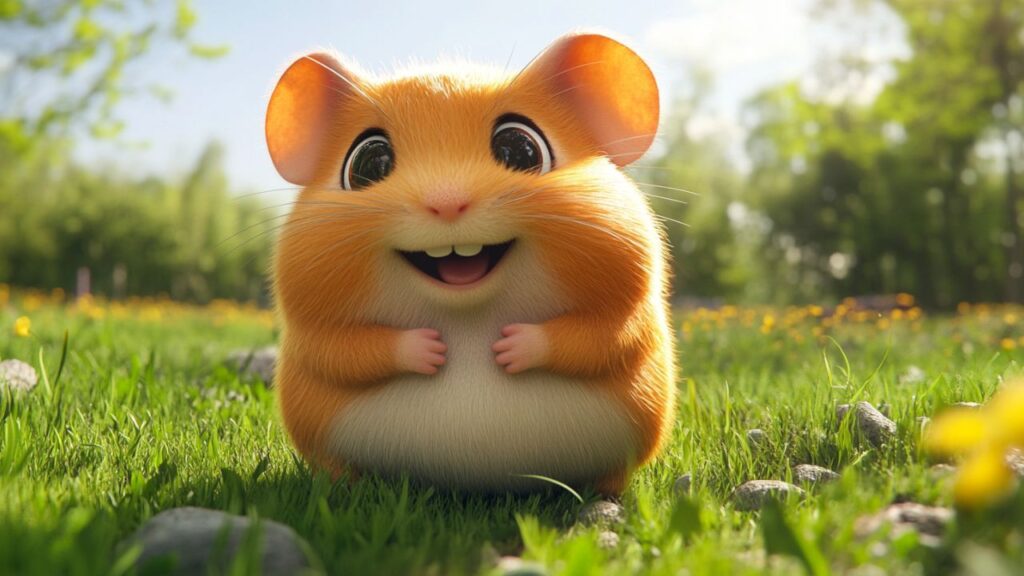
Training your hamster to jump through hoops isn’t just a charming trick that you can show off to friends and family—it’s an activity that has a range of benefits for your furry friend’s overall well-being. While the sight of your hamster leaping gracefully through a tiny hoop is certainly rewarding, the true value lies in what happens behind the scenes. This type of training provides both mental and physical exercise, fosters a deeper bond between you and your pet, and gives your hamster a confidence boost that can help curb unwanted behaviors like cage chewing or obsessive digging. Let’s break down the key benefits of hoop-jumping training.
Mental and Physical Exercise
Hamsters are naturally active and inquisitive creatures. In the wild, they spend hours each night running, foraging for food, and exploring their surroundings. Domesticated hamsters, while still brimming with the same energy, often lack the same level of physical and mental stimulation, especially if their environment is limited to a small cage and a few basic toys. This is where hoop-jumping training comes in.
Teaching your hamster to jump through hoops provides a unique opportunity for both physical and mental exercise. The act of jumping requires your hamster to use its muscles in a way that’s different from running on a wheel or climbing around its cage. It engages their legs and core, promoting better muscle tone and overall fitness. It’s essentially a miniature workout session that burns off some of their pent-up energy, leaving them feeling more satisfied and relaxed afterward.
But it’s not just about the physical movement—mental exercise plays a crucial role in keeping your hamster healthy and happy, too. Training a hamster to jump through a hoop involves problem-solving, memory, and focus. Your hamster will need to figure out what you want them to do, remember the cues, and execute the behavior repeatedly. This kind of mental engagement helps stimulate their brain, keeping them alert and curious. According to research on small animal cognition, providing mental challenges like this can enhance a hamster’s learning capacity and reduce stress-related behaviors (Journal of Experimental Psychology: Animal Learning and Cognition, 2014).
Bonding and Trust Development
If you’ve ever tried to build a relationship with a hamster, you know it’s a bit different from bonding with a dog or cat. Hamsters are prey animals by nature, which means they can be skittish and cautious around humans, especially during the early stages of ownership. Training them to jump through hoops, or any other trick for that matter, is a fantastic way to establish trust and strengthen your bond.
When you spend time training your hamster, you’re not just teaching them a new skill—you’re creating an environment of consistent, positive interactions. Each time your hamster successfully jumps through a hoop and receives a treat or a gentle verbal praise, they associate you with good things. This positive reinforcement gradually builds their confidence in you, making them more comfortable and willing to engage with you outside of training sessions.
Over time, as your hamster learns to trust you, you’ll notice subtle changes in their behavior. They may start coming up to you more readily, exploring your hand without hesitation, or responding to your voice or movements. These small signs show that your hamster sees you as a safe and positive presence in their life. Plus, the shared experience of working together to achieve a goal deepens your relationship, turning training sessions into special bonding moments that both you and your hamster can enjoy.
Enhancing Confidence and Reducing Boredom
Boredom can be a big issue for hamsters. If left unstimulated, they may develop undesirable behaviors like gnawing on the bars of their cage, chewing on plastic accessories, or frantically digging at the corners of their enclosure. These behaviors are often signs that your hamster needs more enrichment or variety in their daily routine. Teaching your hamster to jump through hoops can be a great remedy for boredom.
Learning a new trick like hoop-jumping introduces novelty and challenge into your hamster’s life. As they progress through the training stages—first getting comfortable with the hoop, then learning to step through it, and finally mastering the jump—they experience a sense of accomplishment. Each new milestone boosts their confidence, showing them that they can interact with their environment in new and exciting ways.
As your hamster gains confidence through training, you might notice them becoming more willing to try other new things, whether it’s exploring a new toy or navigating a mini obstacle course. This newfound bravery and willingness to engage with their surroundings can significantly improve their quality of life. When a hamster feels confident and in control, they’re less likely to resort to repetitive or destructive behaviors out of frustration or boredom.
How Hoop Training Prevents Boredom:
- Variety of Movement: Jumping is a different type of exercise compared to running or climbing, providing an alternative way to expend energy.
- Learning Process: Training sessions are mentally stimulating and keep your hamster engaged as they work to figure out what you’re asking them to do.
- Positive Associations: The treats and praise they receive during training create a sense of achievement, reinforcing their desire to learn and interact with you.
Ultimately, hoop-jumping training is a win-win activity that benefits both you and your hamster. It’s an opportunity to exercise their body, engage their mind, and deepen your bond. Every time your hamster successfully leaps through a hoop, they’re proving that they’re capable of learning and performing complex behaviors, despite their tiny size. And for you, it’s a joy to watch your little friend grow, thrive, and reach new heights—literally!
Understanding Your Hamster’s Learning Style
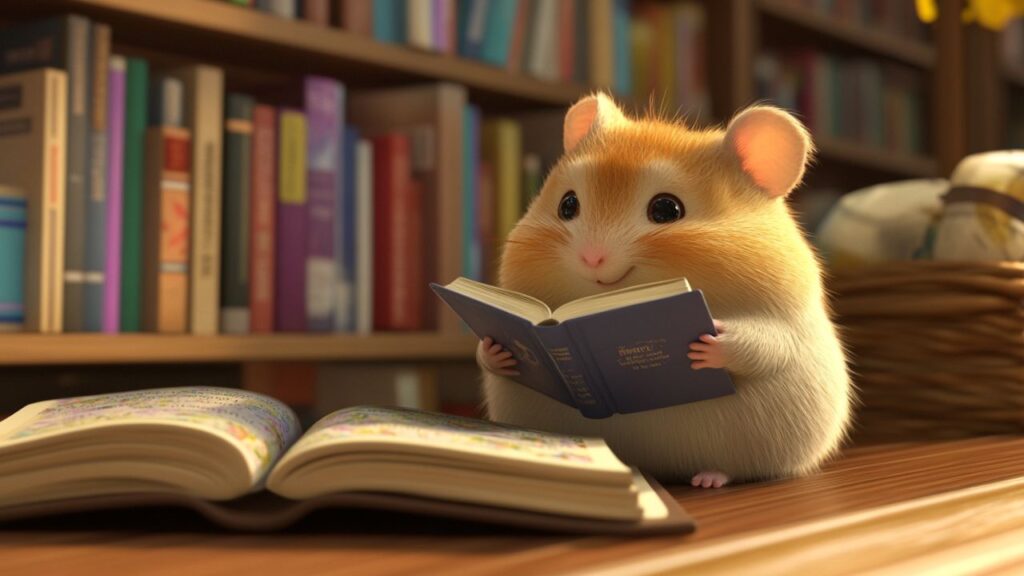
Teaching a hamster to perform tricks like jumping through hoops requires a good grasp of how they learn and what motivates them. Hamsters are curious and intelligent little creatures, but their learning style is unique and differs significantly from other pets like dogs or cats. To make your training sessions as effective as possible, it’s essential to align your approach with your hamster’s natural tendencies and behaviors. Let’s explore how their curiosity, timing, and positive reinforcement all play crucial roles in shaping a successful training experience.
Natural Curiosity and Exploration
Hamsters are inherently curious animals. In the wild, they spend most of their active time exploring new environments, sniffing out food, and navigating through unfamiliar spaces. This instinct to explore and investigate new objects can be a valuable asset during training sessions. When introducing your hamster to something novel, like a hoop, you’re tapping into their natural tendency to examine anything that appears unusual or different in their surroundings.
To make the most of this curiosity, begin by placing the hoop (or any new training tool) in your hamster’s enclosure or play area without expecting any specific behavior right away. Let your hamster approach the hoop on their own terms, allowing them to sniff, nudge, or even climb through it. This exploratory phase helps your hamster become comfortable with the hoop and reduces any potential fear or hesitation they might have toward the object.
During this stage, resist the urge to guide your hamster or push them through the hoop. The goal is simply to encourage voluntary interaction. You’ll likely see your hamster approach the hoop cautiously at first, pausing to investigate or backing away if they feel unsure. This is completely normal! Be patient and let your hamster’s curiosity take the lead. By allowing them to explore the hoop without pressure, you’re setting a solid foundation for more structured training later on.
Timing and Attention Span
Understanding the best times to train your hamster is key to ensuring productive and enjoyable sessions. Hamsters are crepuscular, meaning they’re most active during the early morning and late evening hours. These are the ideal times to schedule your training sessions, as your hamster will be naturally alert and energetic. Trying to train a hamster during the middle of the day, when they’re likely to be napping, will result in a tired, disinterested pet who isn’t in the mood to learn.
Additionally, hamsters have relatively short attention spans. They can only focus on a single activity for a few minutes at a time before they start getting distracted or bored. Because of this, keep your training sessions short—ideally around 5 to 10 minutes per session. Trying to train for longer periods can lead to frustration for both you and your hamster, making it less likely that they’ll retain what they’ve learned.
During each session, focus on one small goal or step. For instance, in the early stages, your goal might simply be for your hamster to walk through the hoop while it’s lying flat on the ground. In the next session, you might raise the hoop slightly to encourage a small hop. Breaking down the training into tiny, manageable steps aligns with your hamster’s learning style and makes it easier for them to understand what’s expected.
If your hamster shows signs of losing interest, such as wandering off, grooming themselves excessively, or ignoring the hoop altogether, it’s time to wrap up the session and try again later. Ending the session on a high note—like when your hamster successfully interacts with the hoop—is crucial. This leaves your hamster with a positive memory of the training and makes them more likely to participate eagerly next time.
The Role of Positive Reinforcement
Positive reinforcement is the cornerstone of successful hamster training. Since hamsters don’t respond to scolding or punishment and can easily become frightened by loud voices or sudden movements, using treats, verbal praise, and gentle encouragement is the most effective way to teach new behaviors.
When your hamster performs the desired action—such as stepping through the hoop or hopping a small distance—immediately reward them with a tiny treat. The treat should be something they really love but don’t get very often, like a piece of fresh fruit, a sunflower seed, or a small bit of cheese. Pair this reward with a soft, cheerful verbal cue like “Good job!” or a gentle whistle. Over time, your hamster will start to associate the verbal cue with receiving a treat, which reinforces the behavior and makes them more likely to repeat it.
Timing is everything when it comes to positive reinforcement. Make sure to offer the treat and praise as soon as your hamster completes the action you want to encourage. If you wait too long, your hamster might not understand which behavior is being rewarded, which can lead to confusion. Repetition is also key; consistent use of positive reinforcement helps your hamster build strong associations between the trick they’re performing and the reward they receive.
Another important aspect of positive reinforcement is patience. Some hamsters pick up new tricks quickly, while others need more time and practice. Never show frustration if your hamster doesn’t seem to be progressing as quickly as you’d hoped. Instead, focus on the small victories, like when your hamster sniffs the hoop or puts a paw through it for the first time. Reward and celebrate these steps, no matter how minor they may seem.
Choosing the Right Tools for Hoop Training
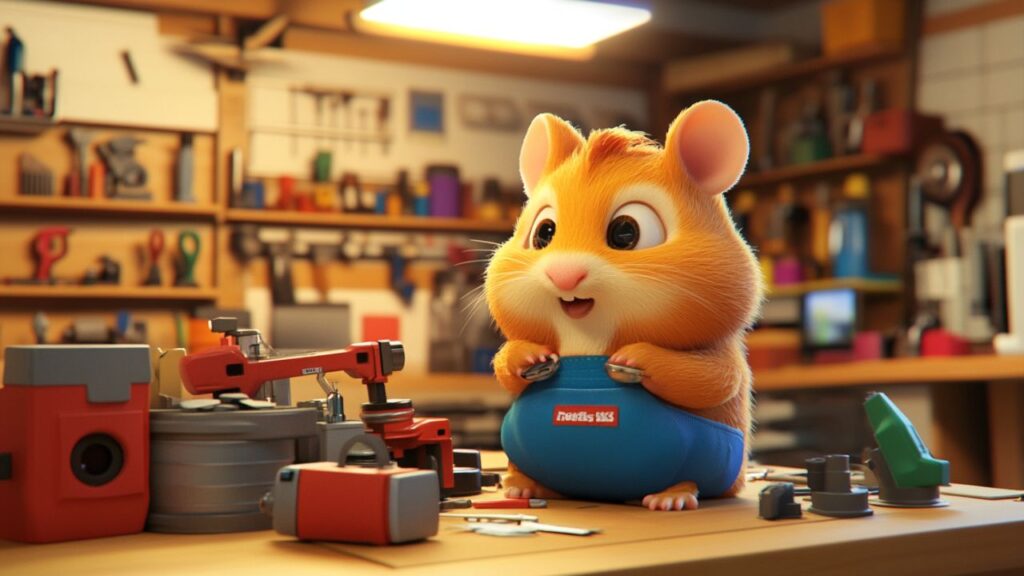
Before you dive into teaching your hamster to jump through hoops, it’s important to set the stage with the right training tools. The equipment you use can make or break the training experience, as hamsters are sensitive creatures who require safe and comfortable conditions to learn effectively. To get started, you’ll want to select an appropriately sized hoop, use materials that are safe for your hamster to interact with, and have a stash of delicious treats on hand to motivate and reward your furry friend. Let’s explore these essential tools in more detail to ensure your training sessions are a success.
Selecting the Right-Sized Hoop
The first step in hoop training is choosing the right-sized hoop for your hamster. The hoop should be small and lightweight, making it easy for your hamster to navigate without feeling overwhelmed or intimidated. A good rule of thumb is to select a hoop that’s slightly larger than your hamster’s body but not too large that it becomes daunting for them to jump through. The ideal hoop size typically falls between 4 to 6 inches in diameter, depending on the size of your hamster.
For dwarf hamsters, who are smaller and more delicate, opt for a hoop closer to the 4-inch mark. Larger breeds, like Syrian hamsters, can comfortably handle a 5 or 6-inch hoop. The hoop’s width is also important; it should be narrow enough to encourage your hamster to jump rather than walk through, but not so narrow that it forces them to squeeze or struggle. Start with a hoop that is placed flat on the ground so your hamster can get used to walking through it without any height. Once they’re comfortable, you can slowly lift the hoop a little higher to introduce the jumping element.
Additionally, consider using a hoop that is easy to hold or prop up, as stability is crucial during training. If the hoop wobbles or falls over when your hamster approaches, it might scare them off and create negative associations. A hoop that stands on its own or can be gently held in place will provide a more reliable training environment.
Safe Materials to Use
When selecting or crafting a hoop for your hamster, the material it’s made of is just as important as its size. Hamsters have delicate bodies and sensitive skin, so it’s crucial to choose non-toxic, smooth materials that won’t pose any risk of injury. Avoid using any metal hoops with rough edges or items that could break into sharp pieces, as these can harm your hamster if they accidentally come into contact with them.
The best materials for hamster hoops include plastic, wood, or fabric-covered options. Plastic hoops are lightweight and easy to clean, but make sure they’re free from small parts that could become choking hazards. Wooden hoops, if properly sanded and smooth, can provide a natural and safe option for your hamster to jump through. However, keep in mind that some hamsters like to chew on wooden items, so be prepared to replace the hoop if you notice significant gnaw marks.
If you prefer a softer option, you can create or buy fabric-covered hoops. These are gentle on your hamster’s paws and body and reduce the risk of injury if your hamster bumps into the hoop during training. Just be sure to use non-toxic fabric dyes and materials to ensure there’s no risk of your hamster ingesting harmful chemicals if they decide to chew or lick the hoop.
Materials to Avoid:
- Metal Hoops with Rough Edges: Sharp edges can cut or scrape your hamster’s skin, leading to injuries or infections.
- Painted or Varnished Wood: Chemicals in paint or varnish can be toxic if ingested. Stick to untreated, natural wood or use pet-safe dyes and coatings.
- Cheap Plastic with Small Parts: Low-quality plastics can break easily, creating sharp fragments that could hurt your hamster or be swallowed accidentally.
Using Treats as Motivation
Treats are the cornerstone of effective hamster training. They serve as positive reinforcement, showing your hamster that good things happen when they successfully complete a task. Choosing the right treats can be the difference between a hamster who’s eager to participate and one who’s completely disinterested in jumping through the hoop.
Hamster-safe treats include small pieces of fresh fruits like apple or banana, dried fruits like raisins, or nuts and seeds such as sunflower seeds or pumpkin seeds. These treats are highly motivating because they’re tasty and can be eaten quickly, allowing you to maintain the flow of the training session. Avoid using treats that are too large, sticky, or messy, as they can slow down the training process or cause unnecessary distractions.
Since hamsters have small stomachs and can only eat a limited amount at a time, it’s crucial to use treats sparingly. Break larger treats into tiny pieces so that each successful action—whether it’s walking through the hoop or jumping over it—earns a small but satisfying reward. This prevents your hamster from becoming full too quickly and losing interest in the session.
It’s also helpful to rotate between different treats to keep your hamster’s interest piqued. If you notice your hamster getting bored with one type of treat, switch to another option to maintain enthusiasm and excitement during training. Just be mindful of any dietary restrictions or health concerns specific to your hamster. For instance, avoid sugary treats if your hamster is prone to diabetes or overweight.
Suggested Treats for Training:
- Small Pieces of Fresh Fruits: Apple, pear, or strawberry. Make sure to remove any seeds or skin that could be harmful.
- Dried Fruits: Dried cranberries, raisins, or pieces of apricot (in moderation, as dried fruits are high in sugar).
- Nuts and Seeds: Unsalted sunflower seeds, pumpkin seeds, or small bits of walnut.
Hannah’s Training Tactics – Tips for Hoop-Jumping Success
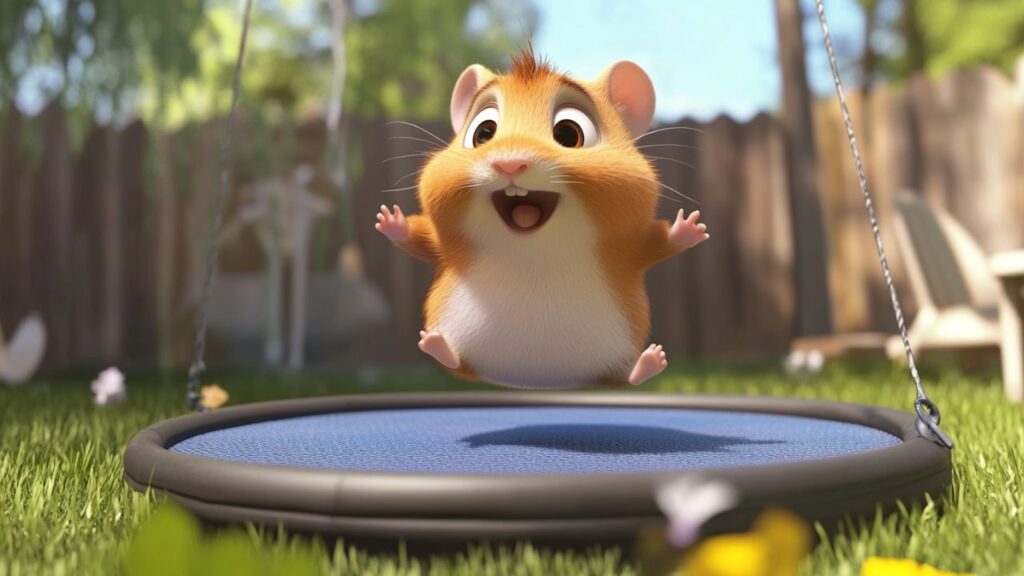
Training your hamster to jump through hoops is a fun and rewarding process, but like all good things, it requires a bit of finesse and understanding. It’s important to approach each session with patience, positivity, and the flexibility to adapt to your hamster’s unique learning style. Below are a few tips to ensure that each training session is productive and enjoyable for both you and your furry friend. By keeping sessions short, using consistent verbal cues, and being patient with your hamster’s progress, you’ll set the stage for successful learning and a stronger bond.
Tip 1: Keep Training Sessions Short and Sweet
When it comes to training, less is often more—especially for hamsters! Unlike dogs or cats, hamsters have short attention spans and can become easily distracted or tired. This is why it’s crucial to keep your training sessions brief, usually lasting no longer than 5–10 minutes at a time. Short sessions prevent your hamster from becoming overwhelmed or losing interest, making it more likely that they’ll retain what they’ve learned and approach the next session with enthusiasm.
During these brief sessions, focus on one small, manageable goal at a time. For instance, in the beginning stages, your objective might simply be for your hamster to approach and walk through the hoop while it’s on the ground. Once they’re comfortable with that, you can move on to slightly raising the hoop to encourage a small hop. By breaking the trick down into smaller steps, you’re giving your hamster the chance to build confidence and master each stage before progressing further.
If you notice your hamster getting restless, disinterested, or starting to groom themselves excessively, these are signs that it’s time to end the session. It’s always best to wrap things up on a positive note, such as when your hamster completes a desired action or shows interest in the hoop. This helps reinforce a positive association with training and keeps your hamster looking forward to future sessions.
How to Implement This Tip:
- Set a Timer: Use a timer to keep track of the session length and ensure it doesn’t exceed 10 minutes. If your hamster shows signs of fatigue or distraction earlier, cut the session short and try again later.
- Focus on One Goal: Have a specific objective in mind for each session. Whether it’s encouraging your hamster to approach the hoop or make a small jump, keeping the goal clear will make the session more effective.
- Observe and Adapt: Watch your hamster’s behavior closely. If they seem engaged and curious, continue for a few more minutes. If they lose focus, it’s a good indicator to end the session and give them a break.
Keeping training sessions short and sweet prevents your hamster from becoming overwhelmed and ensures that each lesson is both enjoyable and productive. A little patience goes a long way, and by respecting your hamster’s limits, you’ll build a foundation of trust and positive reinforcement.
Tip 2: Use Verbal Cues Consistently
Verbal cues play a significant role in helping your hamster understand what’s expected of them during training. Even though hamsters may not grasp the meaning of words in the same way that dogs do, they can learn to associate specific sounds or phrases with certain actions. Using a consistent verbal cue—such as “jump,” “hoop,” or a gentle whistle—each time your hamster successfully jumps through the hoop helps reinforce the behavior and strengthens the connection between the action and the reward.
To implement verbal cues effectively, choose a single word or phrase and use it every time your hamster completes the desired action. For instance, when your hamster hops through the hoop, say “Good job, jump!” or “Jump!” in a cheerful, encouraging tone. Pair this verbal cue with a treat immediately after your hamster performs the action. Over time, your hamster will start to associate the sound of the cue with both the behavior and the positive outcome of receiving a treat.
It’s important to remain consistent with your verbal cues. Using different words or tones of voice can confuse your hamster, making it harder for them to understand what you’re asking. If you decide to change the cue, make sure to transition gradually by using both the old and new cue together until your hamster gets the hang of it. The goal is to create a clear and predictable pattern that helps your hamster know exactly what to do when they hear the verbal cue.
How to Implement This Tip:
- Choose a Simple, Short Cue: Stick to one or two syllable words, like “jump” or “hoop,” to keep it clear and easy for your hamster to recognize.
- Use the Cue at the Right Moment: Say the verbal cue as your hamster performs the action, then immediately follow up with a treat. This timing helps your hamster link the cue with the behavior.
- Stay Consistent: Avoid changing the verbal cue mid-training. Consistency helps reinforce the association, making it easier for your hamster to understand and respond.
Using verbal cues consistently is like giving your hamster a helpful hint each time they perform the trick. It creates a structured and predictable training environment that makes learning new behaviors easier and more enjoyable.
Tip 3: Be Patient and Adapt
Every hamster learns at their own pace, so it’s essential to approach training with patience and flexibility. Some hamsters might take to jumping through hoops quickly, while others may need more time and encouragement to get comfortable. It’s normal to experience setbacks or days when your hamster doesn’t seem interested in training at all. During these moments, it’s important not to get frustrated or discouraged.
If your hamster seems hesitant or unwilling to jump, take a step back and reassess your approach. Are the treats you’re using motivating enough? Is the hoop at a comfortable height, or could it be lowered to reduce their reluctance? Perhaps your hamster is simply not in the mood for training at that particular moment. These are all factors to consider when adapting your strategy.
Instead of pushing your hamster to perform, allow them to take breaks and explore the hoop on their own terms. Celebrate small milestones—like stepping through the hoop or touching it with their nose—and gradually build up from there. Training should always be a positive experience, so focus on creating an environment that’s fun, encouraging, and stress-free.
If your hamster appears fearful of the hoop or unwilling to approach it, try making the hoop less intimidating by adding familiar scents (like rubbing a bit of their bedding on it) or placing it closer to their favorite toys. Adapt your methods based on your hamster’s reactions, and always be willing to slow down or adjust the training if needed.
How to Implement This Tip:
- Celebrate Small Wins: Every bit of progress—whether it’s your hamster approaching the hoop or taking a small hop—is worth celebrating. Offer praise and rewards for every success, no matter how small.
- Adjust the Training Environment: If your hamster is struggling, consider changing the training space, the height of the hoop, or the type of treats you’re using. Sometimes a small change can make a big difference.
- Respect Your Hamster’s Comfort Levels: Never force your hamster to jump or interact with the hoop if they’re showing signs of fear or discomfort. Take a break and try again later when they seem more relaxed.
By being patient and adapting your training approach based on your hamster’s unique needs and comfort levels, you’ll create a positive and supportive learning environment. Remember, training isn’t just about teaching a trick—it’s about building trust and enjoying the journey together.
Conclusion: Celebrating Your Hamster’s New Trick
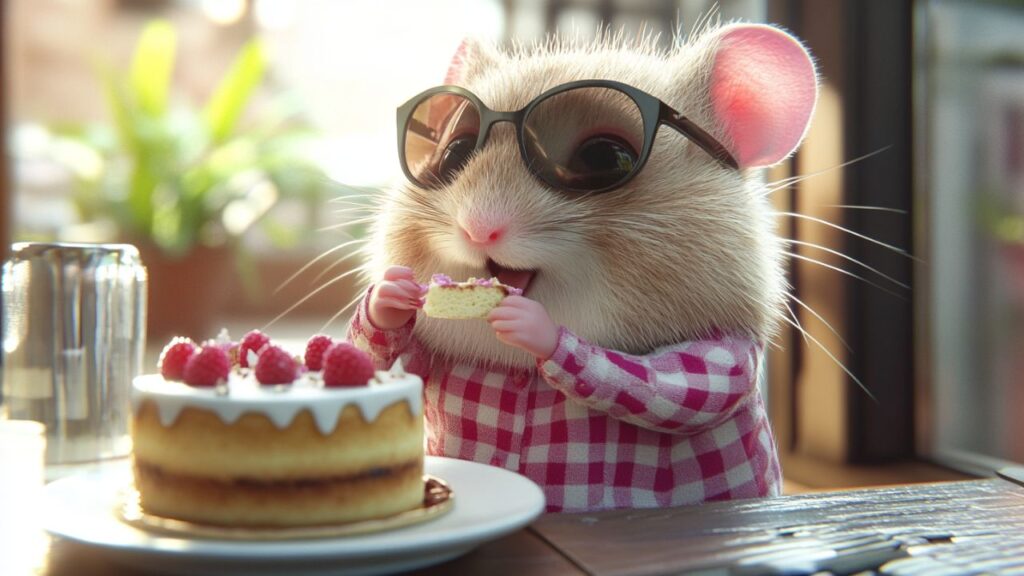
Congratulations! You and your hamster have embarked on an exciting journey to master a fun and impressive trick—jumping through hoops. Whether your hamster has just started to hop through the hoop or is already leaping with confidence, this accomplishment is something to be celebrated. Training your hamster to jump through hoops is more than just a cool skill; it’s a testament to the trust, patience, and dedication you’ve both put into learning something new together.
The benefits of teaching your hamster to jump through hoops go far beyond the trick itself. First and foremost, it provides much-needed mental and physical exercise. Hamsters are naturally active and curious creatures, and learning a new trick like hoop-jumping keeps their minds sharp and bodies agile. This type of training is a great way to channel their energy, helping to prevent boredom and promoting healthy behaviors. It’s a fun, structured activity that challenges them to think and solve problems, all while providing an outlet for their natural agility.
Not only does this trick improve your hamster’s well-being, but it also strengthens the bond between you. Every time you work together in a training session, you’re building trust and a deeper understanding of each other’s cues and signals. Your hamster learns to see you as a source of positivity and rewards, while you gain insight into their unique personality and preferences. Each successful jump, each nudge through the hoop, is a shared victory that brings you closer as companions. Over time, your hamster will become more responsive and willing to engage in other activities with you, making for a more fulfilling and enjoyable relationship.
Training your hamster also enhances their confidence. As they master each step—from stepping through the hoop to making their first jump—they begin to realize their capabilities and feel more at ease exploring new challenges. You’ll notice a boost in your hamster’s willingness to try new things, whether it’s exploring a new toy or navigating a different part of their enclosure. Confident hamsters are happier hamsters, and a confident hamster is less likely to exhibit stress-related behaviors such as excessive chewing or pacing.
Key Takeaways from the Hoop-Jumping Experience
- Mental and Physical Stimulation: Teaching your hamster to jump through hoops engages their brain and body. It’s a fantastic way to keep them mentally stimulated and physically active, helping to maintain a healthy and balanced lifestyle.
- Building Trust and Strengthening Your Bond: Each training session is an opportunity to bond with your hamster. Through consistent positive reinforcement and gentle guidance, you’ve shown your hamster that you’re someone they can trust and enjoy spending time with.
- Boosting Confidence and Preventing Boredom: Successfully mastering a new trick boosts your hamster’s confidence and willingness to engage in other activities. It also serves as a boredom-buster, reducing the likelihood of undesirable behaviors like bar chewing or digging.
Final Word of Encouragement
Remember, the path to training success is paved with patience, persistence, and lots of positive reinforcement. Every hamster learns at its own pace, so it’s important to celebrate each small step along the way. Even if your hamster hasn’t mastered jumping through hoops just yet, every interaction and attempt is progress. Don’t be discouraged if it takes a little longer for your hamster to get the hang of it—what matters most is the positive experience and the shared journey.
Training isn’t just about reaching the final goal; it’s about the process of learning together, understanding each other, and enjoying the time you spend in each other’s company. Whether your hamster makes a tiny hop or a daring leap, they’re showing you that they’re willing to try new things and work with you to achieve something special.
So, keep your training sessions short, sweet, and full of encouragement. Use those tasty treats, gentle praises, and a steady, consistent approach to guide your hamster through each new step. Above all, have fun with the process and savor those moments of discovery, no matter how big or small.
Your hamster may be little, but with your guidance and encouragement, they can achieve big things—like jumping through hoops! You’ve already laid the groundwork for a happy, active, and confident hamster, and the skills you’ve both gained through hoop-jumping training will set the stage for even more amazing tricks and interactions in the future.

